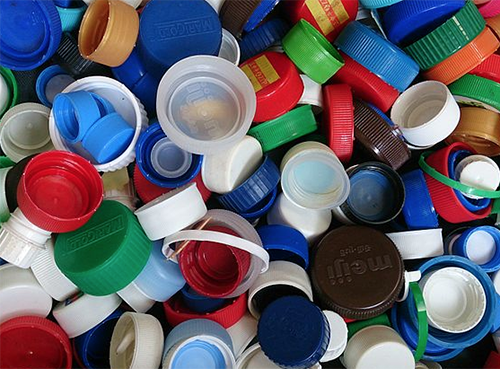All Chemicals
Per- and polyfluoroalkyl Substances (PFAS)
PFAS are a very large class of organo-fluorine compounds used in many different applications for their non-stick, water- and grease-repellant properties. Some long-chain PFAS such as PFOA and PFOS are no longer manufactured but persist as serious environmental pollutants. Short-chain PFAS and other PFAS chemistries are still widely used and are of growing concern [1].
In food contact, PFAS are still used in some food packaging and food service ware. Food contact articles found to contain PFAS have included fast-food wrappers, pizza boxes, bakery bags, food boats, molded fiber bowls and trays, and paperboard take-out containers. PFAS may also migrate into food from use of polytetrafluoroethylene plastic (trade name Teflon) as a coating in food processing equipment including conveyor belts, stirring paddles and baking sheets.
Potential harm: Many PFAS and their degradation products are very persistent in the environment and thus dubbed "forever chemicals" since they do not readily break down and can accumulate in humans and the environment [2]. High levels of PFAS have been found in food and beverage products that have processed or packaged with PFAS-containing food contact materials [1]. PFAS has also been found in contaminated soil and water, seafood, vegetables, and other food products.
A large-scale human health study found probable links to PFOA exposure and six serious diseases: testicular and kidney cancer, thyroid disease, ulcerative colitis, preeclampsia (pregnancy-induced hypertension) and elevated cholesterol [3]. Human epidemiology studies have linked exposure to some PFAS with cholesterol levels [4] and risk of preeclampsia and lower birth rate [5]. PFAS may be associated with increased risk of testicular and kidney cancer [6], and endocrine disruption [7]. Animal studies have also found developmental, liver, kidney, and immunological effects from PFAS exposure.
Status and trends: In the US, several states have adopted policies to phase out the use of PFAS in food packaging in the next couple of years, and market leadership among food retailers is trending in the same direction. However, little public attention has been paid so far to the migration of PFAS from food processing equipment, an issue of emerging concern.
Alternatives: The short-chain PFAS are clearly regrettable substitutes for previous long-chain PFAS chemistry. For grease-proof paper packaging, waxes and polyethylene or PLA-based lamination offer alternatives to PFAS-based coatings. Similar safer substitutes are also beginning to emerge for molded fiber products, such as plates and bowls.
References
[1] Geueke, B. (2016). Dossier – Per- and polyfluoroalkyl substances (PFASs). Food Packaging Forum, July, 1–13. Full text.
[2] Ng, C., Cousins, I. T., DeWitt, J. C., Glüge, J., Goldenman, G., Herzke, D., Lohmann, R., Miller, M., Patton, S., Scheringer, M., Trier, X., & Wang, Z. (2021). Addressing Urgent Questions for PFAS in the 21st Century. Environmental Science & Technology. https://doi.org/10.1021/acs.est.1c03386
[3] http://www.c8sciencepanel.org/ [accessed Oct 10, 2021]
[4] Lin, P. I. D., Cardenas, A., Hauser, R., Gold, D. R., Kleinman, K. P., Hivert, M. F., et. al. (2019). Per-and polyfluoroalkyl substances and blood lipid levels in pre-diabetic adults—longitudinal analysis of the diabetes prevention program outcomes study. Environment international, 129, 343-353. https://doi.org/10.1016/j.envint.2019.05.027
[5] Wikström, S., Lindh, C. H., Shu, H., & Bornehag, C. G. (2019). Early pregnancy serum levels of perfluoroalkyl substances and risk of preeclampsia in Swedish women. Nature Scientific reports, 9(1), 1-7. https://doi.org/10.1038/s41598-019-45483-7
[6] Steenland, K., & Winquist, A. (2020). PFAS and cancer, a scoping review of the epidemiologic evidence. Environmental Research, 110690. https://doi.org/10.1016/j.envres.2020.110690
[7] Di Nisio, A., Santa Rocca, M., De Toni, L., Sabovic, I., Guidolin, D., Dall’Acqua, S., ... & Foresta, C. (2020). Endocrine disruption of vitamin D activity by perfluoro-octanoic acid (PFOA). Nature Scientific Reports, 10(1), 1-12. https://doi.org/10.1038/s41598-020-74026-8
See full list of resources here.
Information last updated: 10/28/2021


